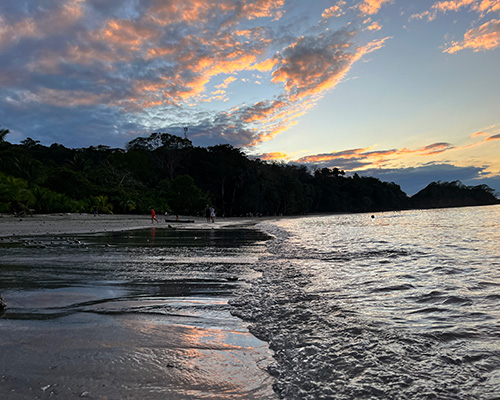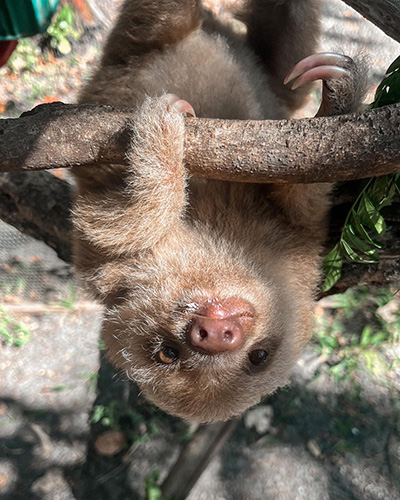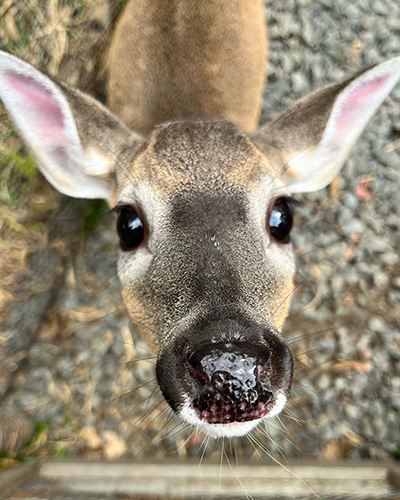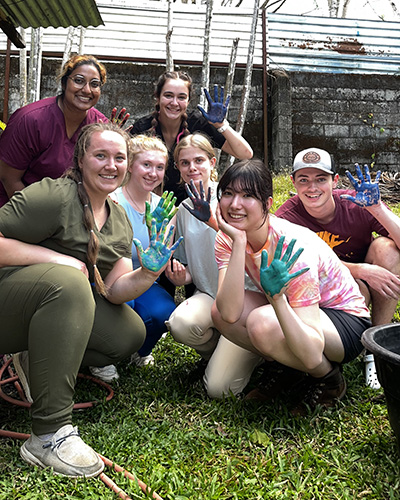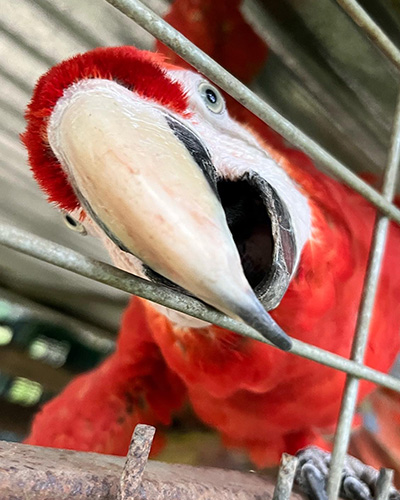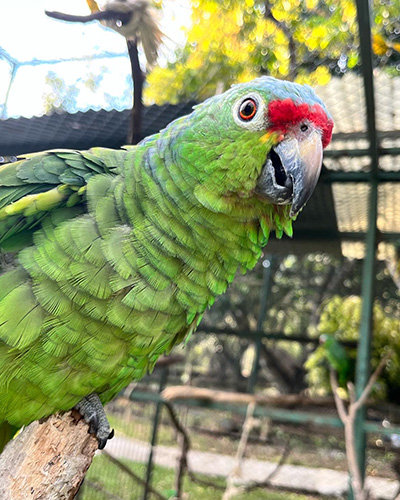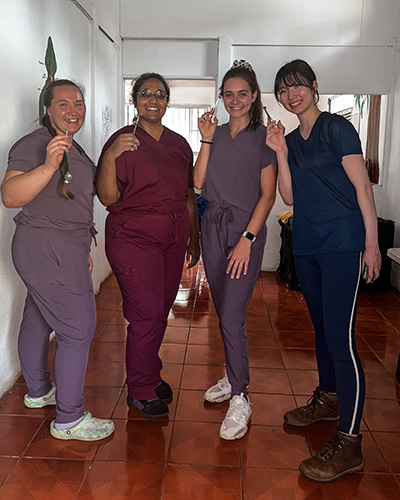Hannah Burrows, Class of 2025
Costa Rica Animal Rescue Center Externship
The sweat dripping down my neck and the bug bites that covered my legs never touched the smile on my face nearly every second of this trip. I had the opportunity to work with a wildlife veterinarian in Costa Rica from January 1st through January 15th, and I discovered the vast differences between medicine in the United States and Costa Rica, as well as the difference between animals. I stayed at the Costa Rica Animal Rescue Center in the Turrucares district of Alajuela, about 45 minutes outside San Jose.
Costa Ricans pride themselves on “living the good life” as their saying throughout the country is “Pura Vida.” And this statement is nothing but the truth; it really is “the good life” down there. The maximum travel velocity (speed limit) is 80 km/hour with the windows down while driving every time. The country’s focus is living with nature and respecting it rather than wanting the next best thing. And this type of lifestyle is reflected in their wildlife medicine. In the facility, there was a main treatment table/room, a room for diagnostic procedures consisting of microscopes and a table that resembled an X-Ray machine, a room where the baby animals spent the night in kennels, a surgery room that also contained medications of different varieties, and a bathroom that was never used because we stored the leaves for the animals in the shower. This was not normal for standard veterinary clinics in Costa Rica, but for wildlife medicine, it was.
The rescue center provides new homes and rehabilitation to many different kinds of animals, such as sloths, red and blue macaws, howler monkeys, spider monkeys, capuchin monkeys, parakeets, white-tailed deer (which are endangered in Costa Rica), kinkajous, peccaries, coatis, and a single peacock who like to antagonize the animals with his beautiful feathers. The daily activities for this facility involved feeding baby sloths goat milk replacer, cleaning the cages, preparing fresh diets for all of the animals, providing fresh leaves for them every morning and evening, and ensuring our medical patients received the physical therapy and treatments they needed. I had the opportunity to learn how to hold large birds, how to feed and hold sloths, administer medications to a baby monkey, provide physical therapy to a sloth with hind limb neurological paralysis, perform necropsies on exotic animals that did not survive treatments from the facility, and even perform my first cat neuter.
But I also learned the hardships of exotic medicine. The majority of the time, we want the animals to be released back into the wild, but more often than we’d like, they can’t be released, and this is for many different reasons. They may already be too accustomed to people, their injuries are nonrecoverable, and they would not survive in the wild, or they grew up in captivity, which is all they know. There is also a constant need for medications because it is very difficult to get them in Costa Rica. The facility had trouble obtaining anesthetics for surgical procedures and different treatment antibiotics. And it is also very difficult to obtain veterinary knowledge about wild species as they are not normally handled and studied for medical purposes.
The amount of knowledge acquired on this trip was immense, from the anatomy of the different animals, their diets, and diseases, to different cultural ideals in different countries. Did you know a sloth’s esophagus is looped, so it prevents them from puking when they eat upside down? Or that a Howler monkey’s howl can be heard up to 5km away in a dense forest, and they use it to mark their territory. It is also illegal in Costa Rica to take pictures with wildlife, like a “selfie,” and post them to social media because the attraction of these posts can cause an increase in the illegal pet trade.
Aside from animals, I learned about cultures from all over the world because other volunteers were from Germany, the UK, Norway, Japan, and Australia. It was a unique experience to share stories and talk about the different lifestyles with everyone from these places. It is very common in almost every other country for high school graduates to take a “gap year” and travel the world doing different things, like volunteering, research, or simply having fun, to try and figure out what they want to do with their lives. And it was astonishing to them that in America, it is normal to not take a gap year but also how early we start out adult lives in the workforce and personal life.
The center also provided trips and excursions to take on our days off. I visited Monteverde and ziplined through the canopy of trees, went to two beaches and swam in the pacific ocean, and visited a volcano still considered active. I will never forget the sign that read, “In case of volcano eruption, stay calm and DO NOT WALK, RUN!” I think that is the only time I will ever see a sign that puts “calm” and “run” in the same sentence. On our last day off, I went to downtown San Jose with friends and toured most of the city. The main shopping plaza was gorgeous, and the buildings all had their own charm in their architecture.
This trip was nearly perfect. Every individual was amazing in every way, the food was perfect and home cooked, and the animals will always have a special place in my heart. The only thing that made the trip not perfect was the lack of the veterinarian’s presence. When we arrived, the previous veterinarian had quit the job, and the facility scrambled to find a new one. So, for the first week, the new vet hired was only present for the weekend days, and a veterinary nurse was working with us during the week. During the second week, the veterinarian could stay every day, and she was absolutely amazing. She taught me so much about exotic animal medicine and was open to everyone’s ideas for medical treatment, handling, and enrichment ideas for the animals. We were a real team, “the Vet Team,” y como siempre, Pura Vida.
